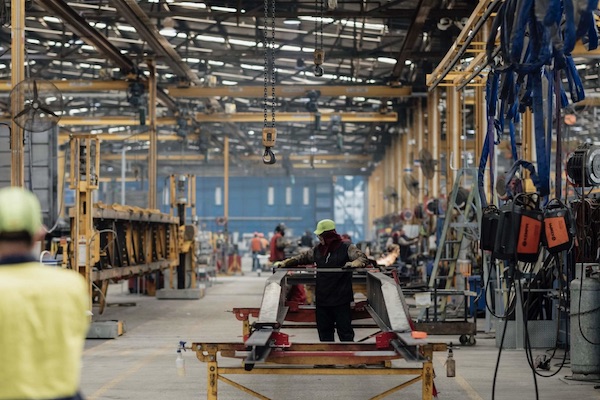Published on the 07/12/2022 | Written by Heather Wright

Making Australian manufacturing great again…
Public consultation – and a Senate inquiry – on the Federal government’s flagship $15 billion National Reconstruction Fund are underway as the government seeks to revive the Australian manufacturing industry.
The fund – one of the largest peacetime industry investments in manufacturing – is modelled on Labor’s existing Clean Energy Finance Corporation fund which provides investments in renewable energy projects, in an effort to bolster Australia’s lack-lustre manufacturing sector.
Industry minister Ed Husic says Australia is ranked ‘dead last’ among OECD countries in manufacturing self-sufficiency, with consumption of manufacturing output nearly double domestic manufacturing output.
“In reclaiming the idea of a country that makes things, there is the potential to reshape what we can achieve.”
“Today, if you want to compete you need sharp manufacturing capability. And manufacturing spans sectors as diverse as medicine, transport, computing and clean energy,” he says.
“We want more Australian companies to think globally and build locally.”
The new fund, which was among Labor’s many election promises, will provide finance, including loans, guarantees and equity, across priority areas including advanced manufacturing and renewables, low-emission technologies and $1 billion dedicated specifically for ‘critical technologies’ such as quantum technologies, robotics and sensing technologies.
Legislation to establish the fund and the National Reconstruction Fund Corporation to drive it was introduced to parliament last week, with industry consultation also kicking off.
The fund will be governed by an independent board.
The Reference Group, made up of industry and investment experts, is yet to be established. That group will set the investment mandate, though the seven priority areas – renewables and low-emission technologies, medical science, transport, value-add in agriculture, forestry and fisheries, value-add in resources, defence capability and enabling capabilities (such as data science, engineering, software development, AI, fintech, edtech, robotics and quantum) – have been established.
Public consultation will provide further definition of the priority areas, including where the government should direct the Fund to focus on, or not invest in, within each of the areas.
A Senate Standing Committee on Economics inquiry into the fund has also launched putting the legislation behind the plan under the spotlight. The committee is due to report back on 28 February 2023, with submissions now open.
Husic has said he wants the funding to begin flowing ‘as soon as humanly possible’ though he told AUmanufacturing that it will be up to the independent board.
At the launch of the fund at the National Press Club, Husic said the fund wasn’t driven by ‘some rose-tinted nostalgia’ for the old days of Australian manufacturing.
“Because in reclaiming the idea of a country that makes things, there is the potential to reshape what we as a people can achieve, together. To reinvigorate faith in Australian ideas and know-how,” he says.
“Around the world, industry policy is being remade before our eyes to shore up local manufacturing capability.”
Last year Singapore launched a 10-year plan to grow local manufacturing by 50 percent by 2030. In the US President Joe Biden has announced nearly $80 billion in semiconductor manufacturing investment, along with more than $100 billion in investments to drive electric vehicles, batteries and critical minerals, as part of a Made in America push.
Husic says governments shouldn’t be afraid to pick winners.
“Governments can and should strategically and thoughtfully invest in the industries of the future.
“That’s what our friends and allies are doing. In the United States, companies like SpaceX, SolarCity and Tesla have thrived largely thanks to government investment. Together those three companies received nearly US$5 billion from the US government,” he says. (Two of those companies are also, notably, Elon Musk companies…)
“When we hail the growth of industries in other parts of the world as an example of what can be done here, just know that governments do act strategically and methodically to nurture and grow those industries.”
The National Reconstruction Fund (NRF) will be administered on the basis that it will achieve a return to cover borrowing costs and will have an expected positive underlying cash impact, Husic says.
Like the Clean Energy Finance Corporation, the NRF will be funded with $15 billion from government debt, based on that assumption that it will achieve a commercial return.
Husic warns that every company that approaches the NRF will need to be prepared.
“They will need a business plan. They will need to show how they propose to build solid companies that generate a return and support the creation of secure, well-paid jobs.
“And there will not be a colour-coded spreadsheet in sight.”
Four virtual consultation sessions, providing information about the NRF and to the opportunity to provide feedback on the consultation paper, are available via the Department of Industry Science and Resources. Sessions start next week.



























